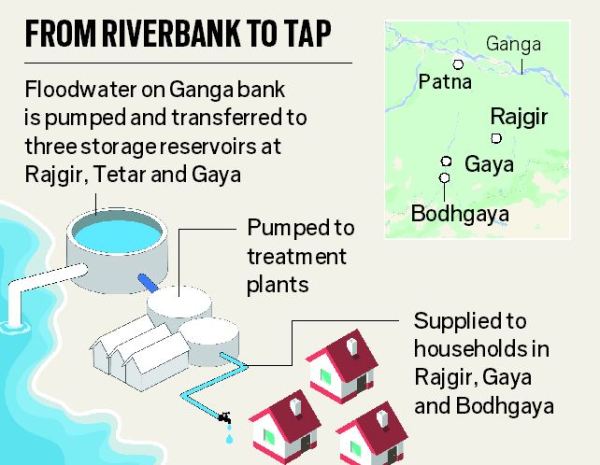UP, Bihar becoming pharma sector dark horses as Himachal, Uttarakhand firms face headwinds
4 min readAs pharma companies based in Himachal Pradesh and Uttarakhand are facing regulatory headwinds, infrastructure woes and GST blues, states such as Uttar Pradesh and Bihar are emerging as dark horses and set to become the new industry hubs in North India.
When the Union government declared a 10-year excise holiday to give a fresh fillip to backward states way back in 2005, many pharma sector entrepreneurs from traditional centres such as Andhra Pradesh, Gujarat, Punjab and Maharashtra shifted their base to Himachal and Uttrakhand. Now more than 2,000 pharma manufacturing units are based in Baddi-Barotiwala-Nalagarh industrial belt in Himachal alone clocking an annual turnover of Rs.2 lakh crore.
However, these units, which have opened doors to cash in on tax incentives and favourable industrial weather, are treading tough terrains with the general excise duty cut to the pharmaceutical sector and withdrawal of income tax holiday in 2010.
The changed regulatory environment along with the lack of infrastructure is forcing many small and medium firms to down shutters or move to different locations, say sources.
“Conducive policies are crucial for the growth of this sector. Many small and medium scale units are facing regulatory hurdles like delay in refund on Integrated Goods and Services Tax (IGST) payment. In this scenario, states that offer more incentives and tax rebates would woo manufacturers,” co-chairman of Federation of Pharma Enterprises (FOPE) Vinod Kalani told Pharmabiz.
While accepting that the regulatory climate is not helpful to small and medium enterprises, Kalani allayed concerns about firms shifting base from Himachal and Uttarakhand. “Many companies have made major investments there. They won’t shift their base. Moreover, units that adhere to strict quality standards and good manufacturing practices will overcome the stormy weather,” he opined.
Baddi in Solan district of Himachal is ranked third among global pharmaceutical hubs, manufacturing more than 150 bulk drugs and exporting to over 200 countries. The industrial town is only 30 km from Chandigarh and a rail link project to the union territory has been hanging fire for years hurting exports. Since there is no rail connectivity, the container depot made for the industry there is virtually useless. The containers loaded are transported to Ludhiana first and from there, these are sent to ports. “The Pharma industry in Himachal has many long-standing demands to improve infrastructure which have largely fallen on deaf ears. The lack of rail line is a major impediment and the high cost of transportation makes our exports non-competitive,” said an official from an industry lobby group.
The firms also face trouble from truck unions. They fix rates which are sometimes way higher than normal charges. This factor also adds to transportation cost and makes products uncompetitive, the official pointed out.
As manufacturing units in Himachal and Uttarakhand face stumbling blocks, Uttar Pradesh is slowly emerging as the dark horse in luring investments thanks to a slew of measures adopted by the Yogi Adityanath government, say industry observers.
The state government is more than willing to extend all support to the pharma sector. It has announced several incentives including subsidy on interest up to Rs.50 lakh per annum till seven years on loan availed to purchase land in pharma parks, Rs.50 crore subsidy on interest on loan taken to construct buildings in pharma parks and tax rebate on stamp duty and electricity bills.
The pharma policy formulated this year by UP focuses on promoting creation of intellectual property by facilitating R&D institutions, building specialised parks and boosting Ayush healthcare products.
The government also seeks to set up green field pharmaceutical parks in Kanpur, Lakhimpur Kheri, Hardoi, Shahjahapur and Ghaziabad with the help of private players. The parks would have research laboratories, diagnostic centres, pharma godowns, hostels and facilities for uninterrupted power supply. On construction of hostel, subsidy of Rs.30 crore will be offered on interest generated on loan availed for construction work.
As per the policy, the pharma units coming to UP will be divided into three categories – mega, large and MSME. The mega units investing more than Rs.100 crore would have to ensure that 75 per cent of their total workforce comprises locals. Large pharma units investing between Rs.10 crore and 100 crore would have to ensure that 50 per cent of their workforce is local. The aim is to make the industry a major job generator in the state.
Bihar is another state waiting in the wings that has the potential to woo investments. The state’s 99 per cent of medicine requirements are procured by the government from other states though there are about 150 pharma manufacturing units there. “What we need is a separate pharma policy to tap the state’s potential and overcome challenges,” Bihar Drugs and Pharmaceutical Manufacturers Association president Sanjiv Rai said.
Till recently the pharma sector has been the most neglected in UP with only a few manufacturing units despite availability of labour and connectivity advantages. But with the formulation of pharma policy and rising government emphasis on the sector, the scenario is changing quickly. According to official figures, Uttar Pradesh has nearly 17 per cent market share of national sales with a turnover of about Rs.90,000 crore in pharma sector.
The Union government is also throwing its weight behind the initiatives of new entrants such as UP and Bihar to become pharma strongholds. Union minister of state for health and family welfare Ashwini Kumar Choubey recently had urged the Indian pharma industry honchos to set up units in sick states like Bihar, Jharkhand and UP.
Courtesy: Pharamabiz.com


